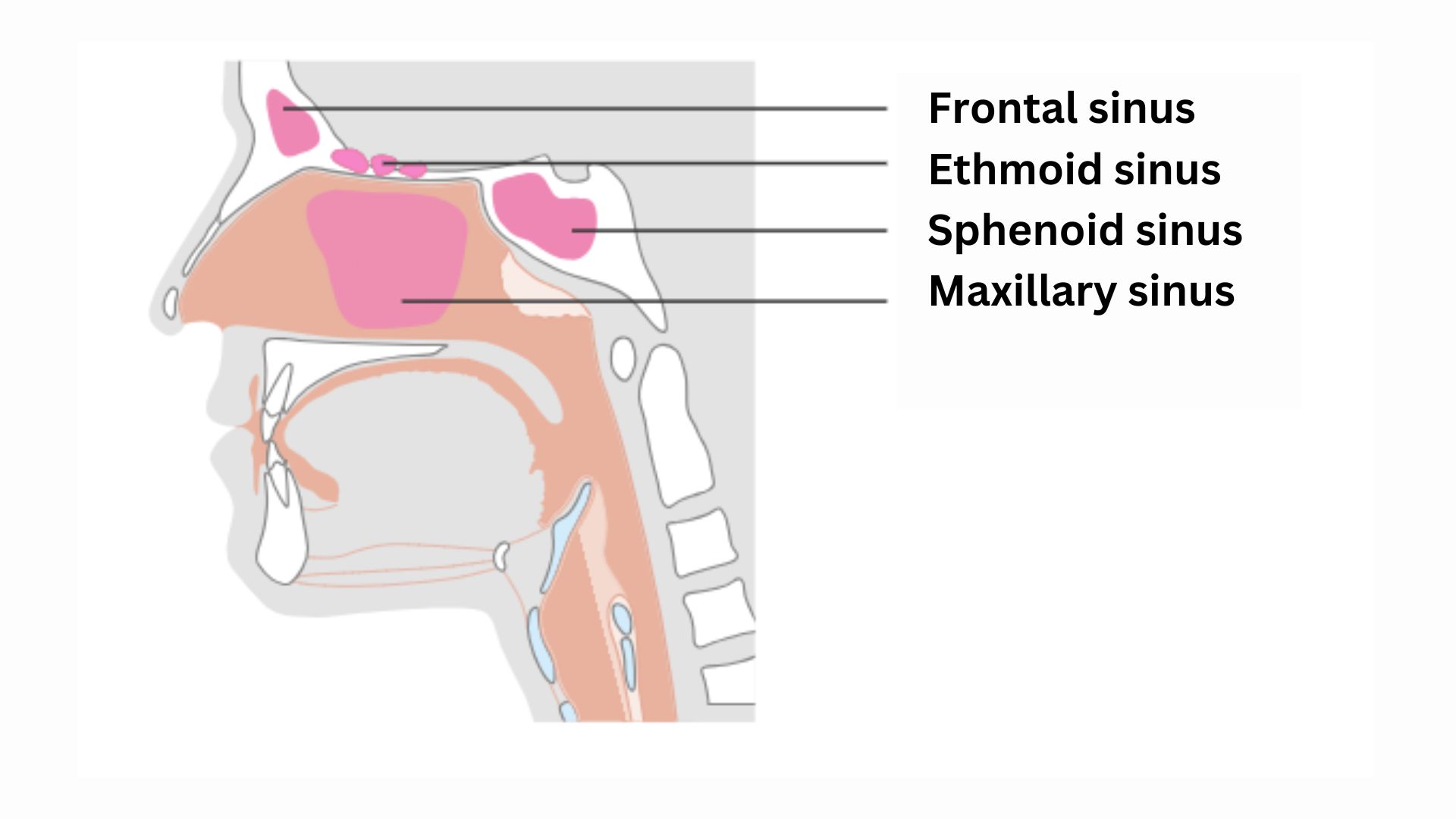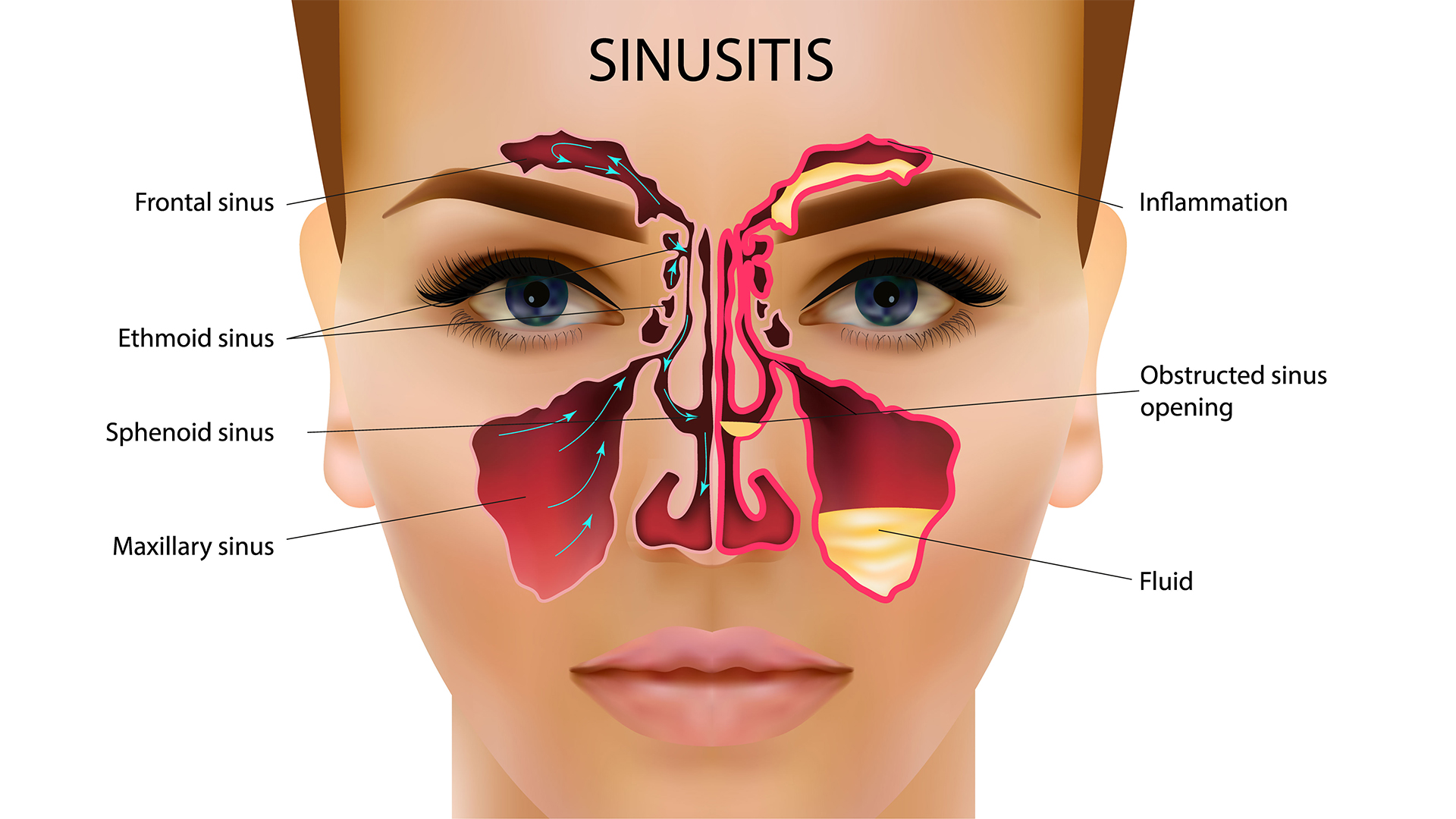What does it look like when your sinuses are clogged?
Having a stuffy nose often comes with pain and tenderness around your cheeks, eyes or forehead. But what do blocked sinuses look like inside your head?

Respiratory infections like the common cold often start with a stuffy nose, and this minor ailment is sometimes followed by pain and tenderness around the cheeks, eyes and forehead — a telltale symptom of blocked sinuses.
But what do clogged sinuses actually look like?
To paint this mucus-filled picture, let's first discuss what the sinuses are and how they function in the body.
"It is easiest to think of the nasal passageway as a main highway, with the sinuses as rest stops," Dr. John Fornadley, an ear, nose and throat specialist and a clinical associate professor of surgery at Penn State, told Live Science by email.
Related: Why don't we breathe equally out of both nostrils?
The sinuses are four pairs of small, air-filled cavities lined with a layer of mucus. Two pairs of sinuses are located inside facial bones — one pair in the cheekbones, or "maxillary" bones, and another pair in the frontal bone just above the eyes. The other two pairs of sinuses are located within skull bones that sit just behind the nose, according to the medical resource StatPearls. All the sinus cavities are connected to the main nasal passageway through a network of narrow tunnels, and they also connect to one another, Fornadley said.
This unique structure helps sinuses fulfill a number of important roles in the body. For instance, the hollow cavities reduce the weight of the head and help cushion the brain from potential damage that could be caused by traumatic injuries to the face, according to StatPearls. They also vibrate as we speak, which boosts the resonance, or deep quality, of our voices; this is why people with clogged sinuses may speak with a flat, nasal voice.
Get the world’s most fascinating discoveries delivered straight to your inbox.
Ever wonder why some people build muscle more easily than others, or why freckles come out in the sun? Send us your questions about how the human body works to community@livescience.com with the subject line "Health Desk Q," and you may see your question answered on the website!
Of course, one of the most important functions of sinuses relates to breathing. When you inhale air through your nose or mouth, it passes through the sinuses and begins to warm to body temperature. The tissues of the sinuses have an ample blood supply that helps warm up the air, and these tissues also produce mucus that helps to moisturize the air and clear it of pollutants, such as dust particles and bacteria, according to StatPearls. This prevents cold, dry air from harming the lungs and also helps oxygen pass from the lungs into the blood.
The sinuses drain any excess mucus through the passages that connect to the nasal cavity. Blocked sinus symptoms can start when these cavities don't drain properly. Nasal congestion, which causes the tissues in the nose to swell and leads to rapid mucus buildup, is one of the main culprits that can block these openings and stop the normal drainage of mucus from the sinus cavities.
"Nasal obstruction can cause sinus congestion the same way a clogged sewer pipe can make the bathtub slow to drain," Fornadley said. So when your sinuses feel clogged, you can imagine mucus pooling around these openings and trickling out very slowly.
When mucus gets trapped in the sinuses, it often leads to sinusitis, a condition in which the sinus lining gets swollen and inflamed, according to the American College of Allergy, Asthma & Immunology. Sinusitis causes pain and tenderness around the cheeks, eyes and forehead, as well as additional symptoms such as jaw pain, fever, coughing and fatigue.
Sinusitis brought on by respiratory viruses cannot be treated with antibiotics, but some symptoms can be managed with decongestants. This type of medication works by reducing swelling in the blood vessels and tissues of the nose, which helps reopen up the sinus passages, according to the Cleveland Clinic. (Be wary, though, as some popular decongestants have recently been found not to work.)
This article is for informational purposes only and is not meant to offer medical advice.

Anna Gora is a health writer at Live Science, having previously worked across Coach, Fit&Well, T3, TechRadar and Tom's Guide. She is a certified personal trainer, nutritionist and health coach with nearly 10 years of professional experience. Anna holds a Bachelor's degree in Nutrition from the Warsaw University of Life Sciences, a Master’s degree in Nutrition, Physical Activity & Public Health from the University of Bristol, as well as various health coaching certificates. She is passionate about empowering people to live a healthy lifestyle and promoting the benefits of a plant-based diet.




